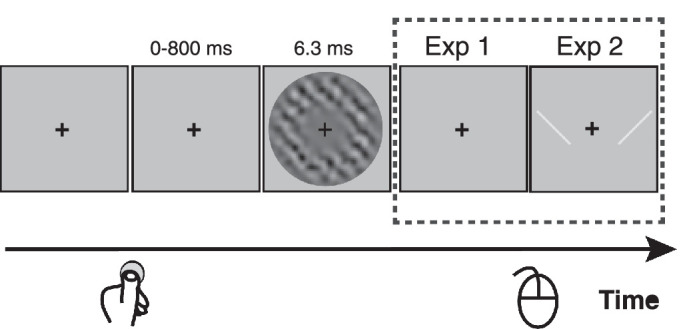Figure 1.

Illustration of the procedure for both experiments. Participants fixated the central cross during trials which were self-initiated by the participant by a voluntary key-press to begin each trial. After a variable time (0–800 ms), a grating (+45° or −45°) embedded in noise was presented for 6.3 ms around the fixation cross. Noise contrast was constant at 30%, but grating contrast was varied to maintain threshold-level discrimination performance. Participants indicated which grating orientation (45° or −45°) they perceived using a two-button mouse. In Experiment 1, there was no response cue, and the orientation-button mapping (either left click for −45° and right click for 45°, or the reverse order) was consistent for each participant but counterbalanced across participants. In Experiment 2, a visual response cue was presented after the target (two lines, 45° and −45°, either side of fixation) and remained until participants responded. In the first task, the order of the cue lines was random on each trial (either as shown, or left-right flipped). In the second task, the response cue order was the same for each participant but was counterbalanced across participants. Participants indicated orientation by choosing the location of the line that matched the grating and pressing the corresponding (left or right) mouse button.
